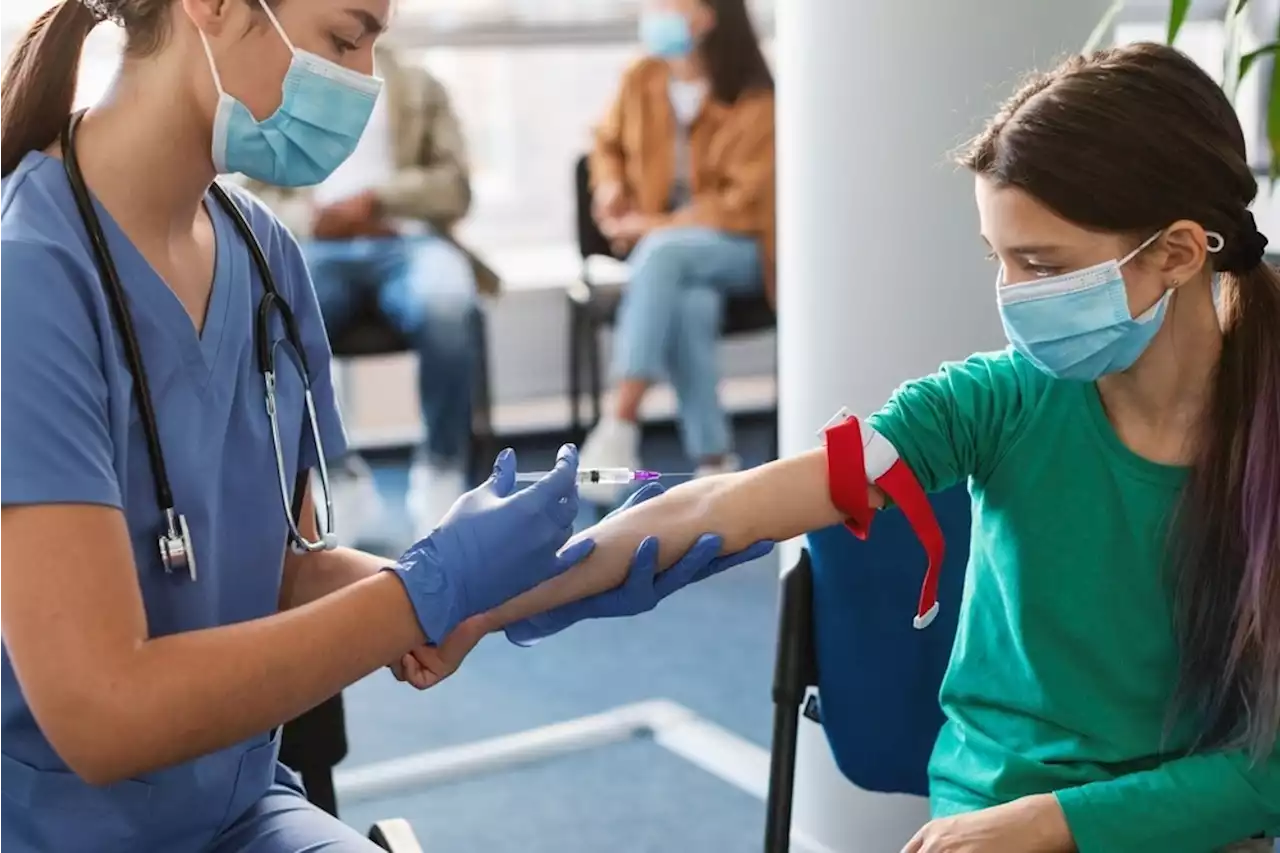Did active monitoring detect potentially elevated risk of health outcomes following BNT162b2 COVID-19 vaccination in the US pediatric population aged 5-17 years? medrxivpreprint COVID19 coronavirus covid vaccination vaccine health
By Neha MathurNov 2 2022Reviewed by Danielle Ellis, B.Sc. In a recent study posted to the bioRxiv* server, researchers used a nearly real-time monitoring framework for early detection of potential safety signals following the administration of the BNT162b2 vaccine in over three million United States children aged five to 17 years. They conducted this study under the US food and drug administration biologics effectiveness and safety initiative.
About the study In the present study, researchers used administrative claims data from three sources, viz., Optum, HealthCore, and CVS Health. These sources had BNT162b2 vaccination data stratified by age group through June 25, 2022, June 6, 2022, and June 31, 2022, from Optum, HealthCore, and CVS Health, respectively.
The researchers used claims-based algorithms to monitor 20 health outcomes identified through medical consultation and literature review. Notably, they also assessed the risk of myocarditis/pericarditis with varying risk windows and care settings. Finally, the team conducted monthly sequential testing using the Poisson maximized sequential probability ratio test. Next, they generated incidence rate ratios of these outcome rates compared to historical rates.
Younger males aged 12-29 years were at an increased risk of myocarditis/pericarditis following mRNA vaccines. Consistent with previous surveillance reports, the current study methods also could not detect a signal for myocarditis/pericarditis in young children aged five to 11 years.
France Dernières Nouvelles, France Actualités
Similar News:Vous pouvez également lire des articles d'actualité similaires à celui-ci que nous avons collectés auprès d'autres sources d'information.
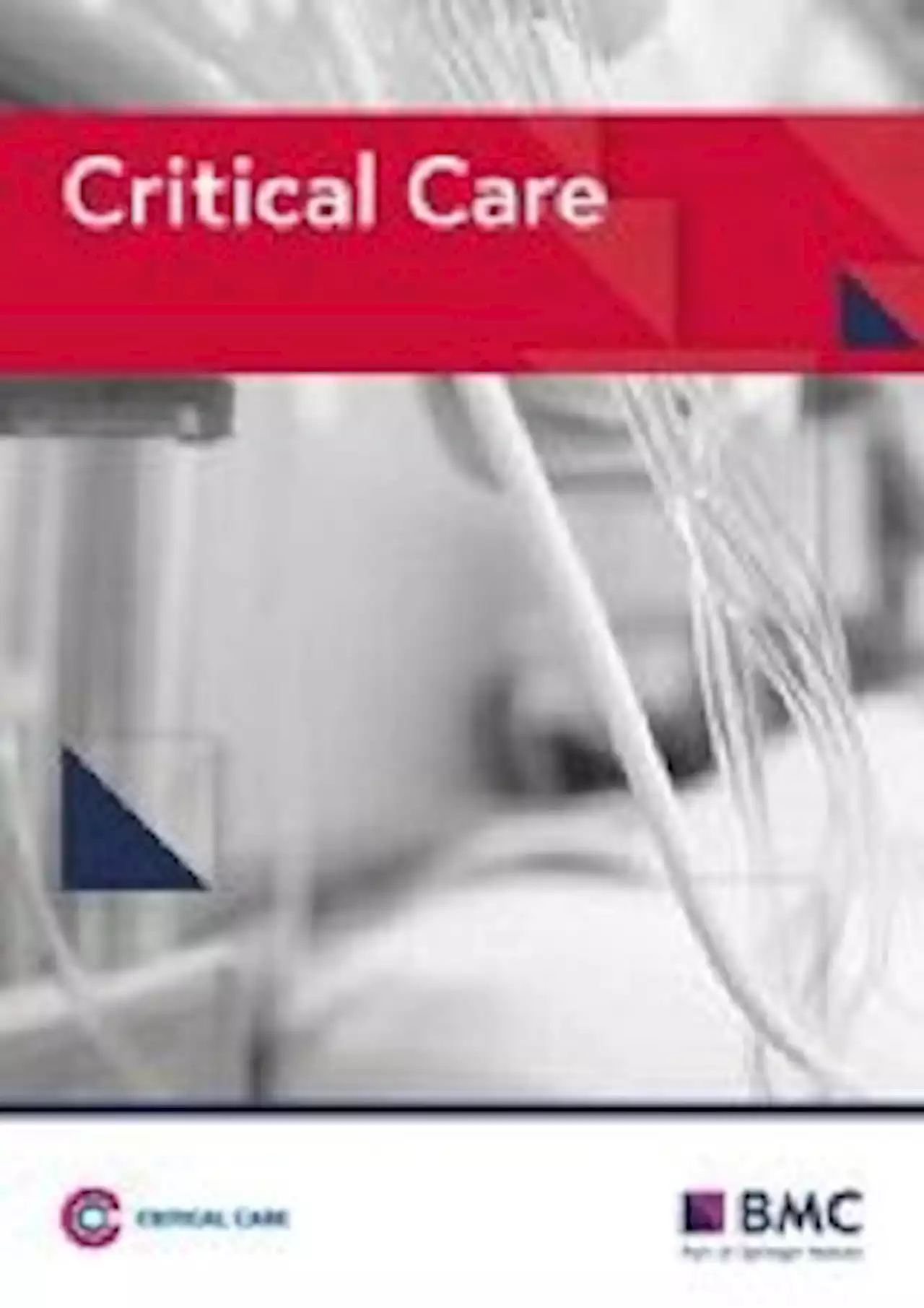 Different epidemiology of bloodstream infections in COVID-19 compared to non-COVID-19 critically ill patients: a descriptive analysis of the Eurobact II study - Critical CareBackground The study aimed to describe the epidemiology and outcomes of hospital-acquired bloodstream infections (HABSIs) between COVID-19 and non-COVID-19 critically ill patients. Methods We used data from the Eurobact II study, a prospective observational multicontinental cohort study on HABSI treated in ICU. For the current analysis, we selected centers that included both COVID-19 and non-COVID-19 critically ill patients. We performed descriptive statistics between COVID-19 and non-COVID-19 in terms of patients’ characteristics, source of infection and microorganism distribution. We studied the association between COVID-19 status and mortality using multivariable fragility Cox models. Results A total of 53 centers from 19 countries over the 5 continents were eligible. Overall, 829 patients (median age 65 years [IQR 55; 74]; male, n = 538 [64.9%]) were treated for a HABSI. Included patients comprised 252 (30.4%) COVID-19 and 577 (69.6%) non-COVID-19 patients. The time interval between hospital admission and HABSI was similar between both groups. Respiratory sources (40.1 vs. 26.0%, p | 0.0001) and primary HABSI (25.4% vs. 17.2%, p = 0.006) were more frequent in COVID-19 patients. COVID-19 patients had more often enterococcal (20.5% vs. 9%) and Acinetobacter spp. (18.8% vs. 13.6%) HABSIs. Bacteremic COVID-19 patients had an increased mortality hazard ratio (HR) versus non-COVID-19 patients (HR 1.91, 95% CI 1.49–2.45). Conclusions We showed that the epidemiology of HABSI differed between COVID-19 and non-COVID-19 patients. Enterococcal HABSI predominated in COVID-19 patients. COVID-19 patients with HABSI had elevated risk of mortality. Trial registration ClinicalTrials.org number NCT03937245 . Registered 3 May 2019.
Different epidemiology of bloodstream infections in COVID-19 compared to non-COVID-19 critically ill patients: a descriptive analysis of the Eurobact II study - Critical CareBackground The study aimed to describe the epidemiology and outcomes of hospital-acquired bloodstream infections (HABSIs) between COVID-19 and non-COVID-19 critically ill patients. Methods We used data from the Eurobact II study, a prospective observational multicontinental cohort study on HABSI treated in ICU. For the current analysis, we selected centers that included both COVID-19 and non-COVID-19 critically ill patients. We performed descriptive statistics between COVID-19 and non-COVID-19 in terms of patients’ characteristics, source of infection and microorganism distribution. We studied the association between COVID-19 status and mortality using multivariable fragility Cox models. Results A total of 53 centers from 19 countries over the 5 continents were eligible. Overall, 829 patients (median age 65 years [IQR 55; 74]; male, n = 538 [64.9%]) were treated for a HABSI. Included patients comprised 252 (30.4%) COVID-19 and 577 (69.6%) non-COVID-19 patients. The time interval between hospital admission and HABSI was similar between both groups. Respiratory sources (40.1 vs. 26.0%, p | 0.0001) and primary HABSI (25.4% vs. 17.2%, p = 0.006) were more frequent in COVID-19 patients. COVID-19 patients had more often enterococcal (20.5% vs. 9%) and Acinetobacter spp. (18.8% vs. 13.6%) HABSIs. Bacteremic COVID-19 patients had an increased mortality hazard ratio (HR) versus non-COVID-19 patients (HR 1.91, 95% CI 1.49–2.45). Conclusions We showed that the epidemiology of HABSI differed between COVID-19 and non-COVID-19 patients. Enterococcal HABSI predominated in COVID-19 patients. COVID-19 patients with HABSI had elevated risk of mortality. Trial registration ClinicalTrials.org number NCT03937245 . Registered 3 May 2019.
Lire la suite »
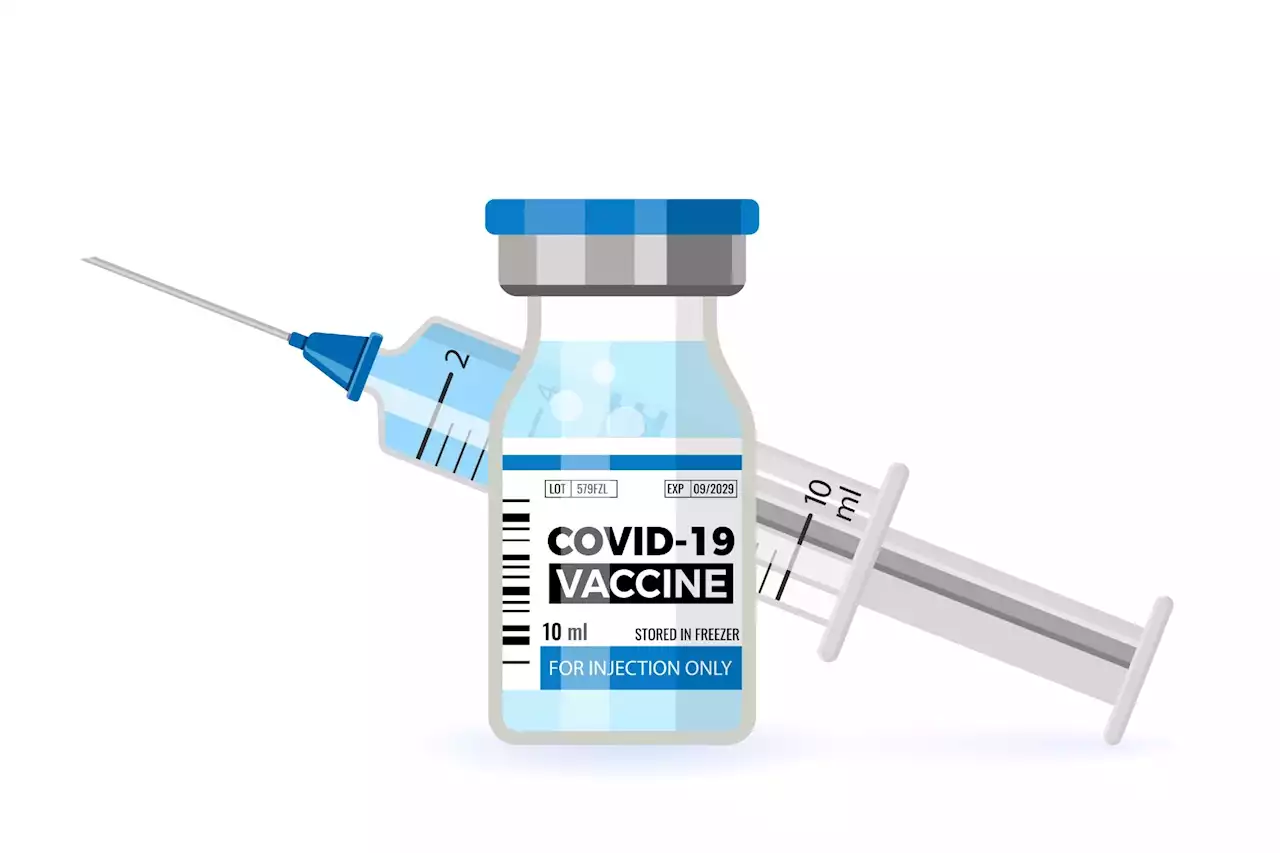 Exploring BNT162b2 vaccine effectiveness against COVID-19 among pediatric and adolescent population of QatarResearchers evaluated Pfizer-BioNTech’s BNT162b2 messenger ribonucleic acid (mRNA) vaccine effectiveness (VE) against SARS-CoV-2 (severe acute respiratory syndrome coronavirus 2) infections among the pediatric and adolescent population of Qatar.
Exploring BNT162b2 vaccine effectiveness against COVID-19 among pediatric and adolescent population of QatarResearchers evaluated Pfizer-BioNTech’s BNT162b2 messenger ribonucleic acid (mRNA) vaccine effectiveness (VE) against SARS-CoV-2 (severe acute respiratory syndrome coronavirus 2) infections among the pediatric and adolescent population of Qatar.
Lire la suite »
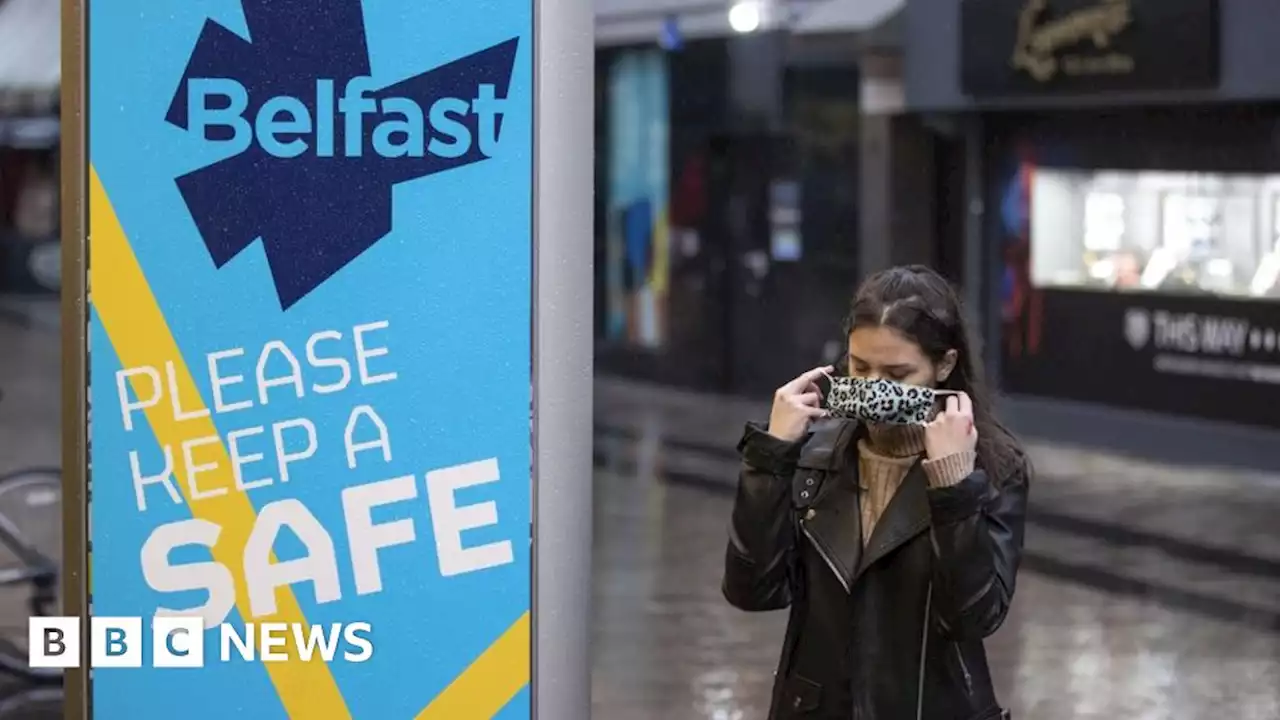 Covid-19: Nearly 5,000 Covid-related deaths registered, inquiry toldGroup calls for Covid-19 public inquiry to consider why Ireland was not considered single land mass during pandemic response Covid19
Covid-19: Nearly 5,000 Covid-related deaths registered, inquiry toldGroup calls for Covid-19 public inquiry to consider why Ireland was not considered single land mass during pandemic response Covid19
Lire la suite »
 Frontiers | SARS-CoV-2 specific antibody trajectories in mothers and infants over two months following maternal infectionInfants exposed to caregivers infected with SARS-CoV-2 may have heightened infection risks relative to older children due to their more intensive care and feeding needs, and may experience more severe infection due to their less developed immune systems. However, there has been limited research on COVID-19 outcomes in exposed infants beyond the neonatal period. Between June 2020 – March 2021, we conducted interviews and collected capillary dried blood from SARS-CoV-2 infected mothers and their infants (aged 1-36 months) for up to two months following maternal infection onset (COVID+ group, 87% breastfeeding, n dyads=46 dyads). Comparative data were also collected from breastfeeding mothers with no known SARS-CoV-2 infection or exposures (breastfeeding control group, n dyads=26), and mothers who tested SARS-CoV-2 negative after experiencing symptoms or close contact exposure (COVID- group, n dyads=11, 73% breastfeeding). Dried blood samples were assayed for anti-SARS-CoV-2 S-RBD IgG and IgA positivity and anti-SARS-CoV-2 S1 + S2 IgG concentrations. Within the COVID+ group, the mean probability of seropositivity among infant samples was significantly lower than that of corresponding maternal samples (IgG 0.54 vs. 0.87; IgA 0.33 vs. 0.85), with likelihood of infant infection positively associated with the number of maternal symptoms and other household infections reported. COVID+ mothers reported a lower incidence of COVID-19 symptoms among their infants as compared to themselves and other household adults, and infants had similar PCR positivity rates as other household children. No samples returned by COVID- mothers or their infants tested antibody positive. Among the breastfeeding control group, 44% of mothers but none of their infants tested antibody positive in at least one sample. Results support previous research demonstrating minimal risks to infants following maternal COVID-19 infection, including for breastfeeding infants.
Frontiers | SARS-CoV-2 specific antibody trajectories in mothers and infants over two months following maternal infectionInfants exposed to caregivers infected with SARS-CoV-2 may have heightened infection risks relative to older children due to their more intensive care and feeding needs, and may experience more severe infection due to their less developed immune systems. However, there has been limited research on COVID-19 outcomes in exposed infants beyond the neonatal period. Between June 2020 – March 2021, we conducted interviews and collected capillary dried blood from SARS-CoV-2 infected mothers and their infants (aged 1-36 months) for up to two months following maternal infection onset (COVID+ group, 87% breastfeeding, n dyads=46 dyads). Comparative data were also collected from breastfeeding mothers with no known SARS-CoV-2 infection or exposures (breastfeeding control group, n dyads=26), and mothers who tested SARS-CoV-2 negative after experiencing symptoms or close contact exposure (COVID- group, n dyads=11, 73% breastfeeding). Dried blood samples were assayed for anti-SARS-CoV-2 S-RBD IgG and IgA positivity and anti-SARS-CoV-2 S1 + S2 IgG concentrations. Within the COVID+ group, the mean probability of seropositivity among infant samples was significantly lower than that of corresponding maternal samples (IgG 0.54 vs. 0.87; IgA 0.33 vs. 0.85), with likelihood of infant infection positively associated with the number of maternal symptoms and other household infections reported. COVID+ mothers reported a lower incidence of COVID-19 symptoms among their infants as compared to themselves and other household adults, and infants had similar PCR positivity rates as other household children. No samples returned by COVID- mothers or their infants tested antibody positive. Among the breastfeeding control group, 44% of mothers but none of their infants tested antibody positive in at least one sample. Results support previous research demonstrating minimal risks to infants following maternal COVID-19 infection, including for breastfeeding infants.
Lire la suite »
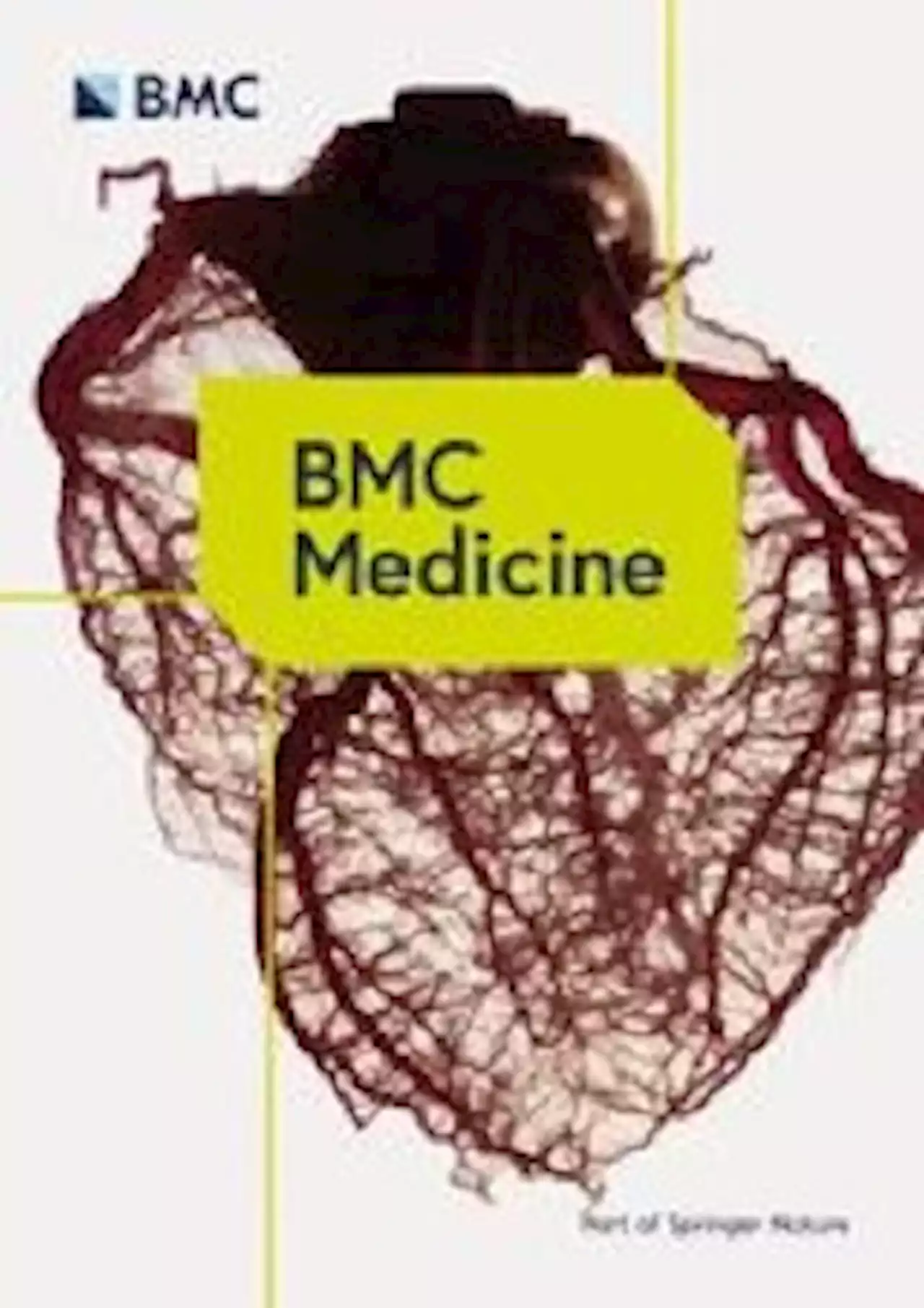 Health-related quality of life among persons with initial mild, moderate, and severe or critical COVID-19 at 1 and 12 months after infection: a prospective cohort study - BMC MedicineBackground Currently, there is limited evidence about the long-term impact on physical, social and emotional functioning, i.e. health-related quality of life (HRQL) after mild or moderate COVID-19 not requiring hospitalization. We compared HRQL among persons with initial mild, moderate or severe/critical COVID-19 at 1 and 12 months following illness onset with Dutch population norms and investigated the impact of restrictive public health control measures on HRQL. Methods RECoVERED, a prospective cohort study in Amsterdam, the Netherlands, enrolled adult participants after confirmed SARS-CoV-2 diagnosis. HRQL was assessed with the Medical Outcomes Study Short Form 36-item health survey (SF-36). SF-36 scores were converted to standard scores based on an age- and sex-matched representative reference sample of the Dutch population. Differences in HRQL over time were compared among persons with initial mild, moderate or severe/critical COVID-19 using mixed linear models adjusted for potential confounders. Results By December 2021, 349 persons were enrolled of whom 269 completed at least one SF-36 form (77%). One month after illness onset, HRQL was significantly below population norms on all SF-36 domains except general health and bodily pain among persons with mild COVID-19. After 12 months, persons with mild COVID-19 had HRQL within population norms, whereas persons with moderate or severe/critical COVID-19 had HRQL below population norms on more than half of the SF-36 domains. Dutch-origin participants had significantly better HRQL than participants with a migration background. Participants with three or more COVID-19 high-risk comorbidities had worse HRQL than part participants with fewer comorbidities. Participants who completed the SF-36 when restrictive public health control measures applied reported less limitations in social and physical functioning and less impaired mental health than participants who completed the SF-36 when no restrictive measures applied. Co
Health-related quality of life among persons with initial mild, moderate, and severe or critical COVID-19 at 1 and 12 months after infection: a prospective cohort study - BMC MedicineBackground Currently, there is limited evidence about the long-term impact on physical, social and emotional functioning, i.e. health-related quality of life (HRQL) after mild or moderate COVID-19 not requiring hospitalization. We compared HRQL among persons with initial mild, moderate or severe/critical COVID-19 at 1 and 12 months following illness onset with Dutch population norms and investigated the impact of restrictive public health control measures on HRQL. Methods RECoVERED, a prospective cohort study in Amsterdam, the Netherlands, enrolled adult participants after confirmed SARS-CoV-2 diagnosis. HRQL was assessed with the Medical Outcomes Study Short Form 36-item health survey (SF-36). SF-36 scores were converted to standard scores based on an age- and sex-matched representative reference sample of the Dutch population. Differences in HRQL over time were compared among persons with initial mild, moderate or severe/critical COVID-19 using mixed linear models adjusted for potential confounders. Results By December 2021, 349 persons were enrolled of whom 269 completed at least one SF-36 form (77%). One month after illness onset, HRQL was significantly below population norms on all SF-36 domains except general health and bodily pain among persons with mild COVID-19. After 12 months, persons with mild COVID-19 had HRQL within population norms, whereas persons with moderate or severe/critical COVID-19 had HRQL below population norms on more than half of the SF-36 domains. Dutch-origin participants had significantly better HRQL than participants with a migration background. Participants with three or more COVID-19 high-risk comorbidities had worse HRQL than part participants with fewer comorbidities. Participants who completed the SF-36 when restrictive public health control measures applied reported less limitations in social and physical functioning and less impaired mental health than participants who completed the SF-36 when no restrictive measures applied. Co
Lire la suite »
 Patients with cancer, suppressed immune system at high risk for severe COVID if treated with systemic drug therapiesPatients with cancer and a weakened immune system who are treated with immunotherapies tend to fare far worse from COVID-19 than those who haven't received such therapies in the three months before their COVID diagnosis, show findings in a new study by researchers at Dana-Farber Cancer Institute, and across the U.S., Canada and Mexico. Researchers found worse outcomes in both the disease itself as well as the fierce immune response that sometimes accompanies it.
Patients with cancer, suppressed immune system at high risk for severe COVID if treated with systemic drug therapiesPatients with cancer and a weakened immune system who are treated with immunotherapies tend to fare far worse from COVID-19 than those who haven't received such therapies in the three months before their COVID diagnosis, show findings in a new study by researchers at Dana-Farber Cancer Institute, and across the U.S., Canada and Mexico. Researchers found worse outcomes in both the disease itself as well as the fierce immune response that sometimes accompanies it.
Lire la suite »
